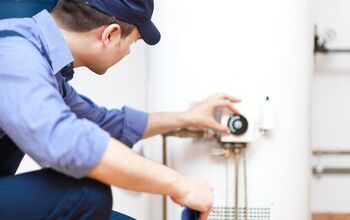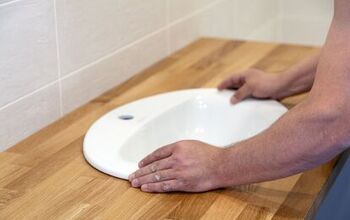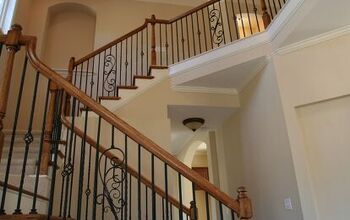How Much Does It Cost to Have a Cable Outlet Installed?

Cable outlets, also known as coaxial outlets, are a common fixture in most modern homes. Even with many households making the shift from traditional cable television, cable internet remains a popular choice across North America.
Outdated homes may be short on coaxial cable outlets. When this is the case, you will need to have one installed. On average, the costs are between $130 and $290 for the part and the installation all in. If you have electrical experience, you can save the labor costs and do the installation yourself.
Do You Need to Hire an Electrician?
Get free, zero-commitment quotes from pro contractors near you.

Cable Outlet Installation Costs
Installing or replacing an electrical outlet can vary in cost depending on the ease of access, the electrician that you choose, and the outlet that you buy. On average, each unit will run you anywhere from $3 to $50 depending on what kind of coaxial outlet you need. Check out this general guide:
| Service | Cost |
| Coaxial Cable Unit | $3-$50 |
| Electrician Cost per hour | $40-$100 |
| National average | $208 |
| Total | $75-$500 |
Hiring an electrician, depending on their experience and availability, will cost anywhere from $40 to $100 per hour. If you go with a special coax unit, like a 220-volt unit, it will cost more in both labor and materials than the standard 120-volt option. Whenever dealing with electrical wiring, it is always advised that you bring in a professional. They work safely and carefully while delivering the best results.
Different Electrical Outlet Types
Coaxial outlets are straightforward, but it is your electrical outlets that can really cost you. There are several different types that you can choose from and your standard 120-volt option will cost about the same as a coaxial cable installation. Even better, if you have the materials already, the electrician should only charge for the labor costs.
120-volt standard
The most common outlet that you will find are the 120-volt outlets that are found in most homes. These run between $3 and $5 each and have been used since the 1950s. They are capable of powering up any devices that are 110-volts and lower. The actual voltage level runs from 110-125 and manufacturers of current appliances tend to build within these standards.
There are also 15-amp, 120-volt units that have a pair of USB units built into them. These are slightly more expensive, running $13 to $22 per unit. This gives you greater versatility as you can plug in tablets, smartphones, and anything else that runs on those USB cables.
2-Prong & 3-Prong
Those standard 120-volt units are also available in two and three-prong units. The two-prongs are less expensive, but they also may not be able to work with many standard appliances and electronics. These will cost around $3 to $5 while the three-prong version will be a little bit more expensive.
The reason that there are different prongs is simple. Two-prongs have a “hot” and “neutral” line to them. The three-prong has those two but also a “ground” wire that drains unused power down into the Earth. This is just an additional layer of safety when using appliances and electronics.
220-Volt, 240-Volt, & 250-Volt
The higher-voltage versions of your three-prong are for heavy appliances. Something like a dryer will typically use something in the 240-250-volt range. They also require higher voltage levels because they expend more power. Here’s an example of 250-volt pricing:
| Amps | Outlet | Cost |
| 20 | Narrow-body, straight blade | $12-$18 |
| 30 | Surface-mount dryer | $12 |
| 30 | Dryer | $10-$12 |
| 50 | Ranges | $10-$20 |
Does a General Electrician Install a Cable Outlet?
Because installing a cable outlet is essentially the same in terms of skill as it would be for installing a general-use outlet, electricians are capable of installing a coaxial cable outlet. This also gives you the peace of mind in knowing that the job was done properly the first time around.
These are the kind of installations that are recommended for the professionals, though it certainly is possible to perform them by do-it-yourself types. Just make sure to cut off the power to that portion of the building to remain safe during the installation process.
Do I Need Coaxial Cable to Have an Internet Connection?
While coaxial cable internet is stable and capable of providing high-speed internet, it isn’t the only way that you can get access from your home. Internet can be provided by cellphone companies for a fairly reasonable cost.
Additionally, there are satellite internet providers, and your phone company can even provide you with an internet connection through your DSL, which requires no installation of a coaxial cable outlet.
How Do You Test a Cable Outlet?
If you have just purchased a home or have an older home that has a cable outlet in it, you may want to check to verify that it works properly. Just because it is there does not mean that it works properly and may need to be replaced or repaired.
In order to check the outlet, you’ll need to find the starting point (point A) and the endpoint (point B) of one of the cables. Use a multimeter as well as a return cable, you can then check the continuity of the existing cable. Your meter will either have a buzzer or Ohms = 0 (this means that the cable is good) to let you know if the current cable outlet has continuity.
Fixing a Coaxial Cable in Your Home
The first step to fixing an existing coaxial cable outlet in your home is to disconnect anything that is currently plugged in. That can be a cable that runs into your cable box or it can also mean your cable internet hookup. Simply unscrew the cable until it comes free completely.
Next, take the plate off of the wall. All you need is a flathead screwdriver and you can simply pull the plate off when you’ve removed the screws. If it doesn’t fall off, you can gently pry it off the wall using your screwdriver.
With the cover now free, unscrew your cable connector. On the other side of the outlet is the same coaxial cable that you had on the front. Since this has a small piece, gripping can be hard; use some pliers to twist the end free.
Install your new cable connector and insert the pin from your coax cable that is located inside the wall, twisting until it is tight. You should use pliers to get it extra tight; again, gripping can be an issue otherwise.
Finally, push the cable connector back through the hole in the wall and secure that hole with the plate once again. You can then reconnect the outside coaxial cable and check to see if it worked properly. If it doesn’t, this could indicate a larger electrical issue and you should call in a professional.
How Long Can You Run Coax Cable Without Loss?
Despite the fact that the cable is a “hardwire”, it still receives signal over the length of that cable. When the cable becomes too long, it can experience signal loss that can drop the quality of the utility that you are using, be it internet or television.
The rule of thumb is that using a 50-foot cable can result in the noticeable loss of signal. Using a 100-foot cable can drop your signal as much as one-third of the original strength. The shorter the cable, the better the signal strength should be overall.
Does a Coaxial Cable Have Electricity?
Coaxial cables actually carry information throughout them, propagated as a radio frequency energy. This is generally associated with a negligible current at very high frequencies. While it is possible to introduce a very small amount of DC current for powering up something in the path of the cable, an amplifier is generally used for this.
Most electrical wiring is also generally flat. Coax cables, meanwhile, tend to be fat and round. They take a little more care to work with and there are even some special tools that may be required to run them through the house and to make the necessary connections.
Do Coax Cables Go Bad?
The short answer is that, yes, like just about any type of residential cabling, coaxial cables can become damaged and stop working. There are generally four issues that can occur with a coax cable: water, heat, damage to the connector, and physical damage to the cable itself.
Connectors can go bad from frequent usage or they can become dislodged from the cable over time. When there are oxidation issues with the coaxial cable, it can lead to potential quality issues when playing video.
It is important to keep your coaxial cables secure and stored safely so that they don’t experience sun damage or aren’t damaged by cleaning, children, or pets.
Do You Need to Hire an Electrician?
Get free, zero-commitment quotes from pro contractors near you.

Are Coaxial Cables Dangerous?
Generally speaking, no, they aren’t. They carry very small levels of voltage through them, making them perfectly safe to handle. Even if the wire gets cut, it should not pose a fire risk as sparks are generally the reason behind house fires in which electricity is involved.
Still, exercise caution when installing or removing coaxial cables. The last thing that you want is to damage the cable for any reason as you will likely need to replace it before finishing your installation or using the device that you want.
Related Guides

Ryan Womeldorf has more than a decade of experience writing. He loves to blog about construction, plumbing, and other home topics. Ryan also loves hockey and a lifelong Buffalo sports fan.
More by Ryan Womeldorf



















![Cost To Drill A Well [Pricing Per Foot & Cost By State]](https://cdn-fastly.upgradedhome.com/media/2023/07/31/9074980/cost-to-drill-a-well-pricing-per-foot-cost-by-state.jpg?size=350x220)



![How To Reset A Whirlpool Cabrio Washer [In 5 Easy Steps!]](https://cdn-fastly.upgradedhome.com/media/2023/07/31/9076531/how-to-reset-a-whirlpool-cabrio-washer-in-5-easy-steps.jpg?size=350x220)



